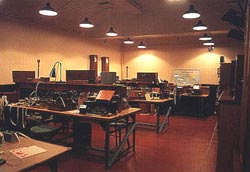

Porthcurno is a small sheltered cove of white sand with the little village. St. Levan and Treen are associated hamlets.
The name 'Porthcurno' comes from the ancient Cornish Language and probably means 'the Bay of Rocks'. In ancient times, Porthcurno was home to Selevan, a Celtic saint. Evidence of his presence exists today in the form of St Levan's well with its flight of stone steps, St Levan's cross and the parish church of St Levan which dates back to the 13th century.
A short walk from the Logan Rock Inn (The Logan Rock Inn is hidden away off the road to Porthcurno) at Treen lies Logan Rock, a 60 ton boulder that until 1824 could be moved by the touch of a hand. In that year a young Naval officer, Hugh Goldsmith (nephew of the poet Oliver Goldsmith), dislodged it with crow bars. He was forced by the Admiralty to restore the rock at his own expense, which he did with a remarkable feat of engineering, but the sensitive balance of the rocking stone was lost.
To the west is the cliff setting of the Minack Theatre, constructed in the 1930's by Rowena Cade, using the natural shape of the cliffs to give a spectacular setting for the theatre. There are summer plays here every year, and there is a visitor centre that gives the story of the theatre.
The Main Cable & Wireless transatlantic cable enters the sea here, and until recently there was a Cable & Wireless training centre in the village . There is a Porthcurno Telegraph Museum here now. It is housed in a secret wartime communications centre within a complex of underground tunnels created to protect Britain's vital communications system during World War II.
On the east side of the bay is Treryn Dinas, an Iron Age Castle with its landward earthworks still in place. Originally it was a great earthwork, a double bank and a ditch which extended in an arc for several hundred feet. This was an Iron Age fortification, hence the name ‘Dinas’ which means castle.
The Book of St Levan and Porthcurno Alison Weeks, Local History Group